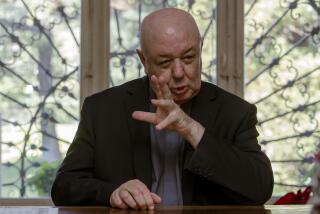The real meaning of Vatican II
- Share via
Responding to the Op-Ed article Sunday on Vatican II by John Gehring a former assistant director for media relations at the U.S. Conference of Catholic Bishops, reader G.V. Climaco of Brea wrote:
“John Gehring’s hatchet job on the Roman Catholic Church is easily refuted. Instead of invoking the vacuous ‘spirit of Vatican II,’ he should read its 16 official documents. And good Pope John XXIII himself, in his opening address to the council on Oct. 11, 1962, declared that the church must adapt its light of truth to a changed world but that its deposit of faith ‘must be preserved intact’ and its teaching authority ‘re-affirmed until the end of time.’
“Helping the poor has from the start been a corporal work of mercy of the church. Many of the American nuns recently reprimanded by the Vatican, however, mix the church’s tradition of service with an obstinate rejection of church teachings.”
John Gehring responds:
Since the Second Vatican Council closed in 1965, Catholics in the pews and religious scholars have debated the legacy of what has been called the most important religious event of the 20th century. How could it be otherwise? Many Vatican officials expressed trepidation when Pope John XXIII unexpectedly called the council. Bishops and cardinals who participated often sharply disagreed with each other. The historic council spawned prodigious volumes of commentary with divergent interpretations. Vatican II still remains something of a Rorschach test for Catholic identity during a time when the church is increasingly divided.
My analysis was a sincere attempt to document larger post-Vatican II trends in our church. As a proud Catholic inspired by church teachings on human dignity and the common good, I want our bishops and all Catholics to remain effective messengers of Gospel values in a pluralistic public square. Groundbreaking documents from Vatican II, especially Gaudium et Spes — the Pastoral Constitution on the Church in the Modern World — offered a vision of church in society that radiated joy and hope. The council emphasized engagement and the need to discern the “signs of the times.” John recognized that a church that simply hurled condemnation from gilded thrones would not change hearts and minds.
The Catholic Church’s countercultural witness — defending the sanctity of all human life — is a treasure. But when some leaders give the false impression that the church is simply the Republican Party at prayer or that Catholicism is a single-issue religion, this treasure is tarnished. Americans know that bishops oppose contraception, abortion and gay marriage. But what about the chasm between rich and poor, environmental destruction and assaults on workers? These are all moral issues central to traditional Catholic teaching that U.S. church leaders are less vocal about.
Nuns on the Bus, a group of Catholic sisters promoting social justice, are being cheered by so many Catholics today not because they oppose church teaching, but because they give expression to the church’s pro-life witness in its fullest sense.
ALSO:
Letters: Romney and PBS funding
More to Read
A cure for the common opinion
Get thought-provoking perspectives with our weekly newsletter.
You may occasionally receive promotional content from the Los Angeles Times.










